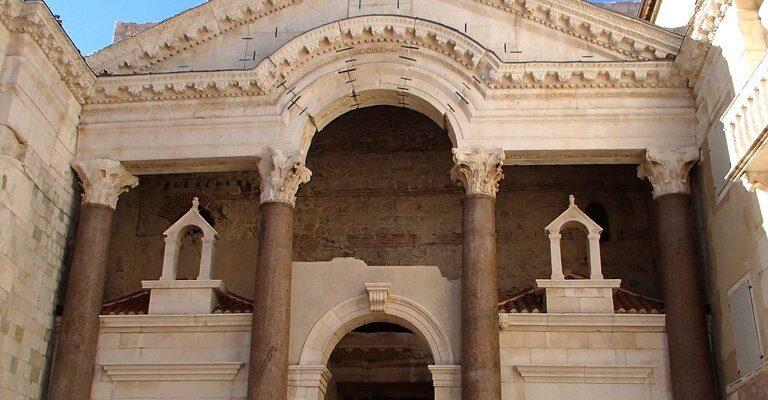Diocletian’s Palace (Dioklecijanova palača)
Diocletian’s Palace is one of the most famous architectural and historical monuments in Croatia, which was inscribed on the UNESCO Cultural Heritage List in 1979. The palace, built by Emperor Diocletian, is considered the world’s best-preserved palace from the Roman Empire.
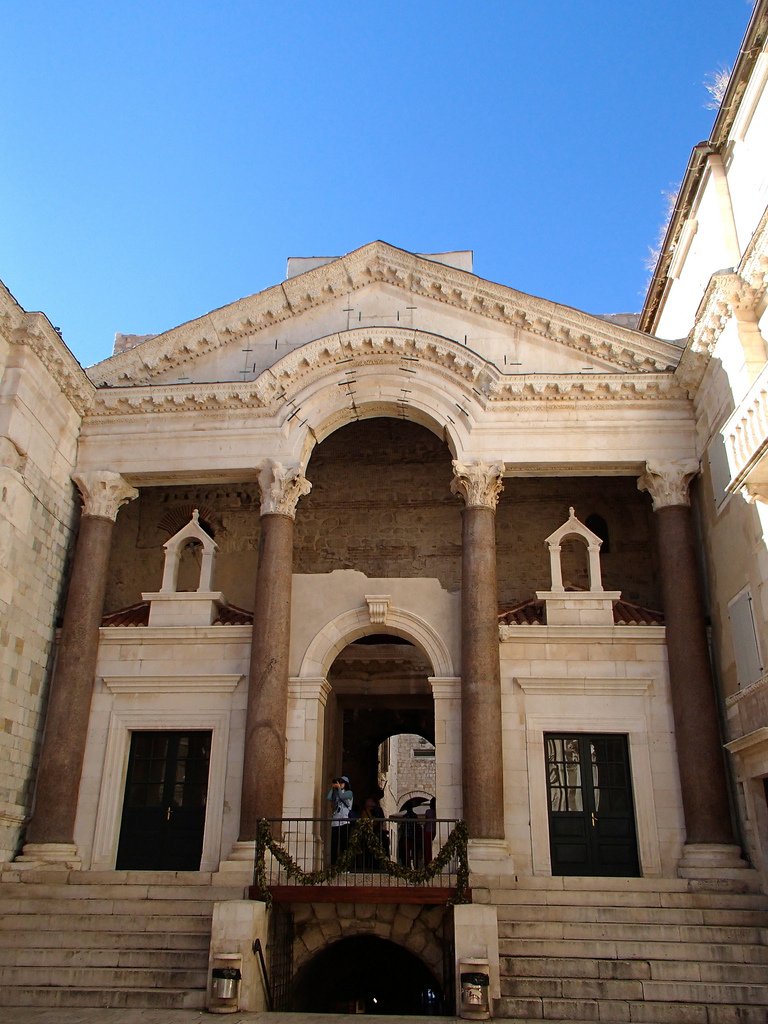
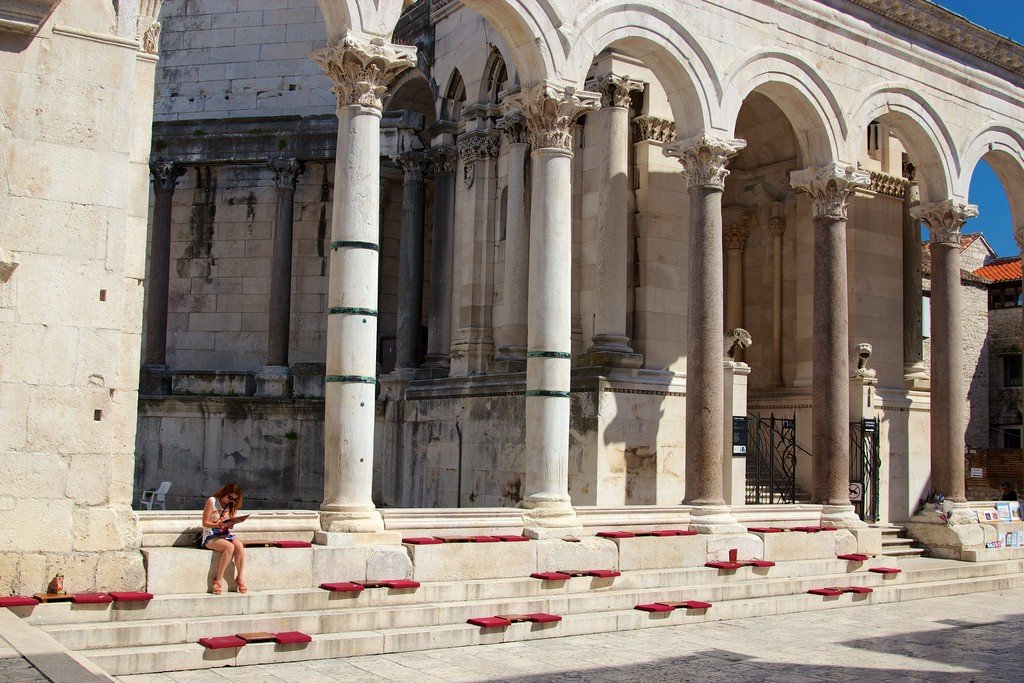
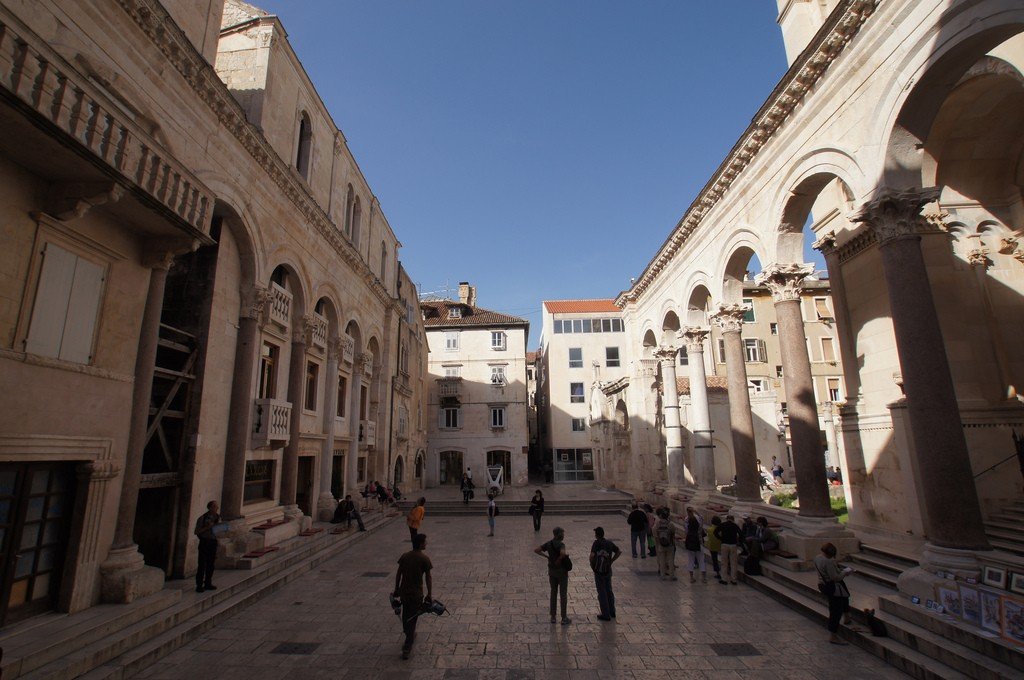
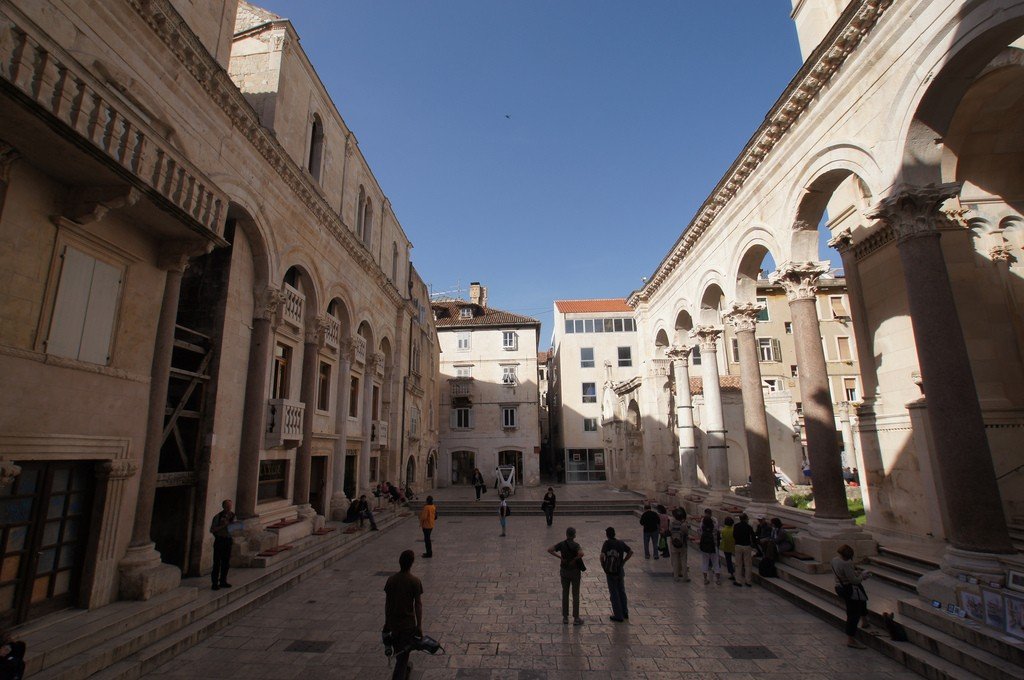
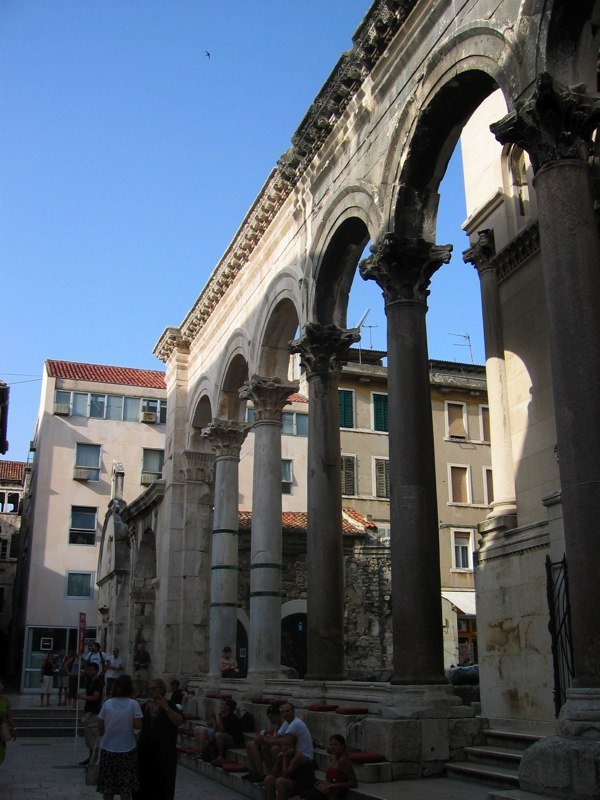
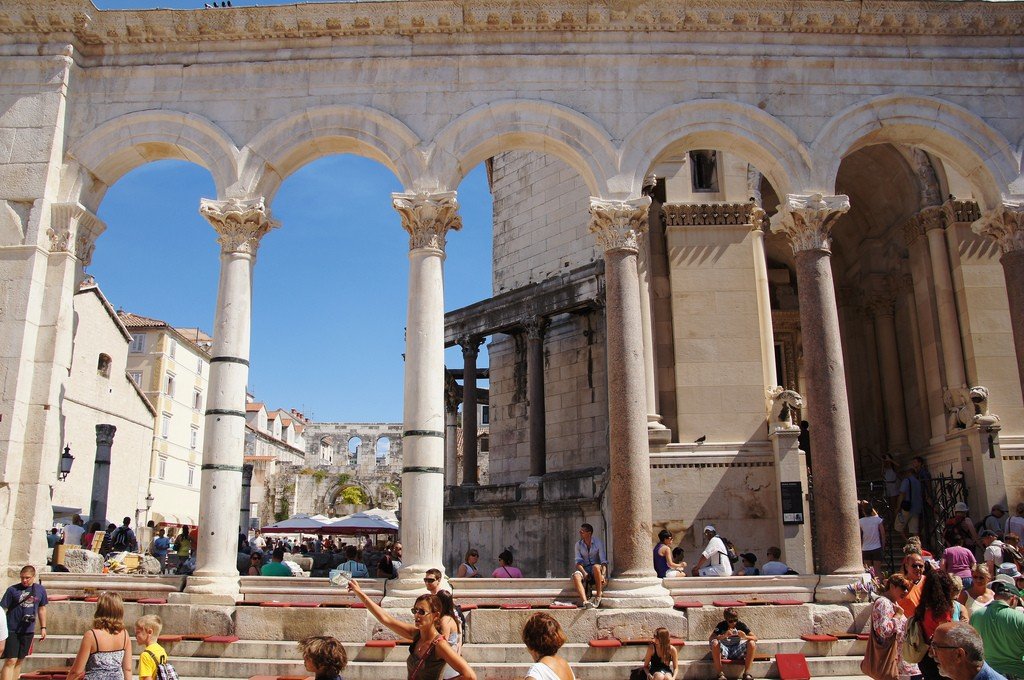
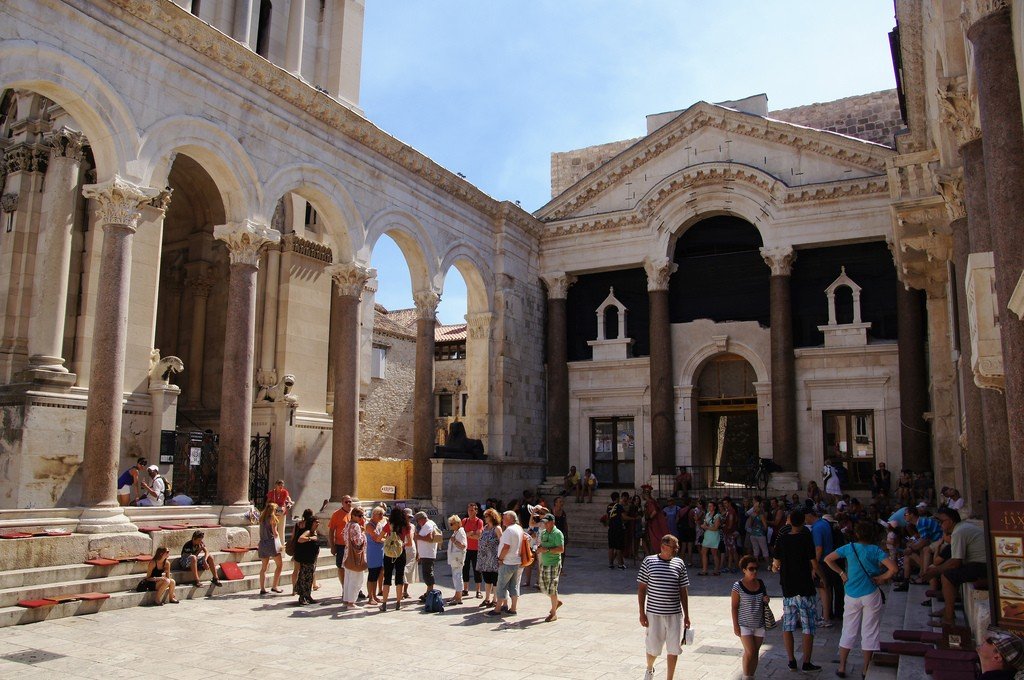
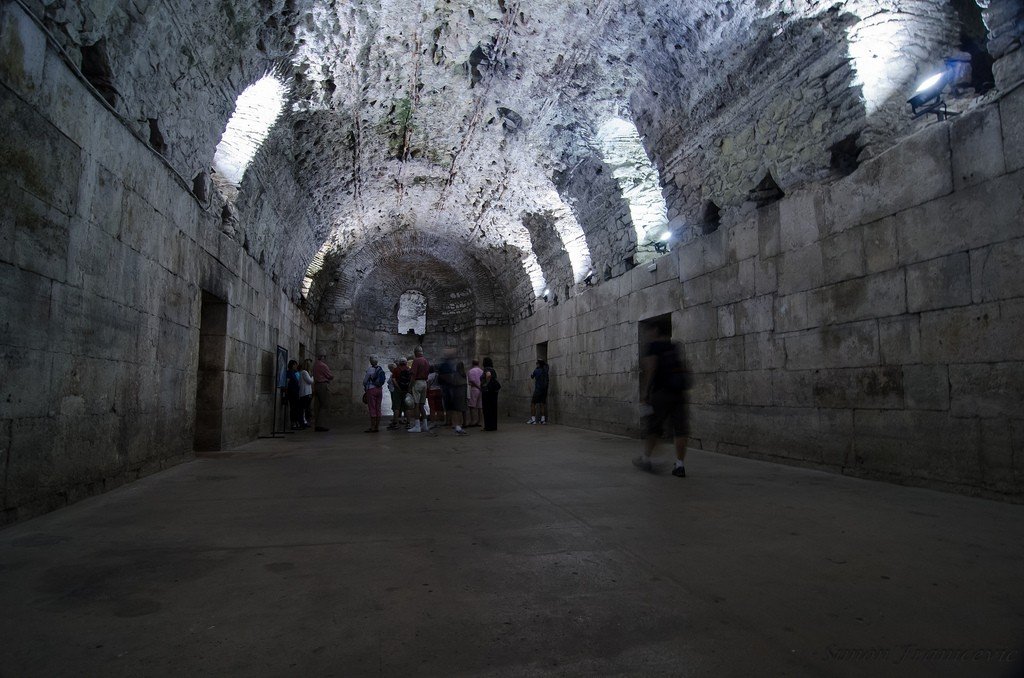
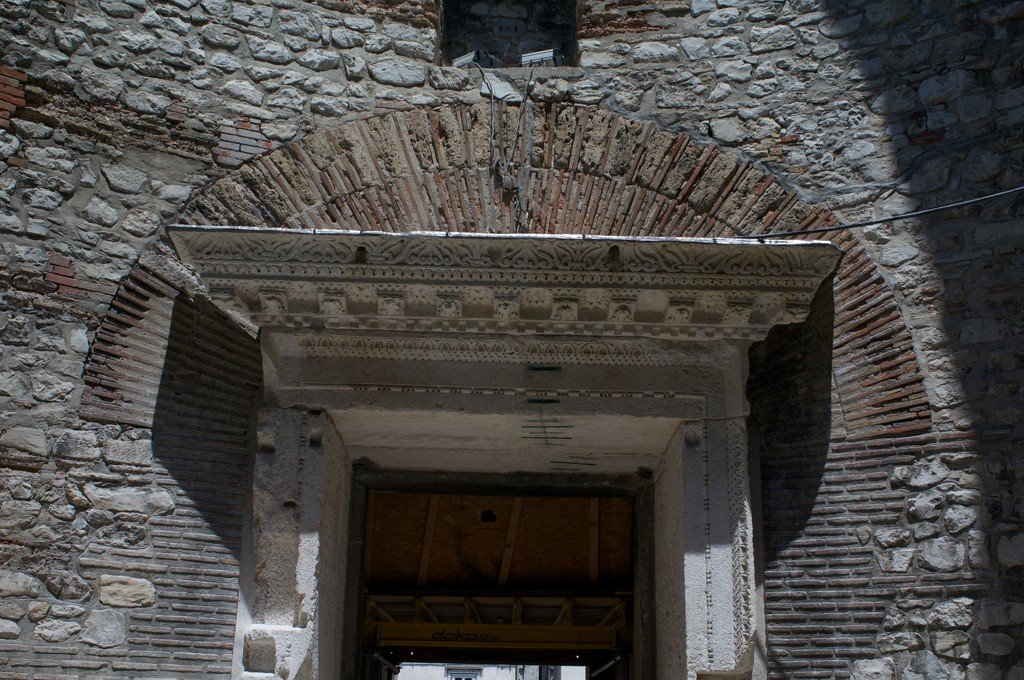
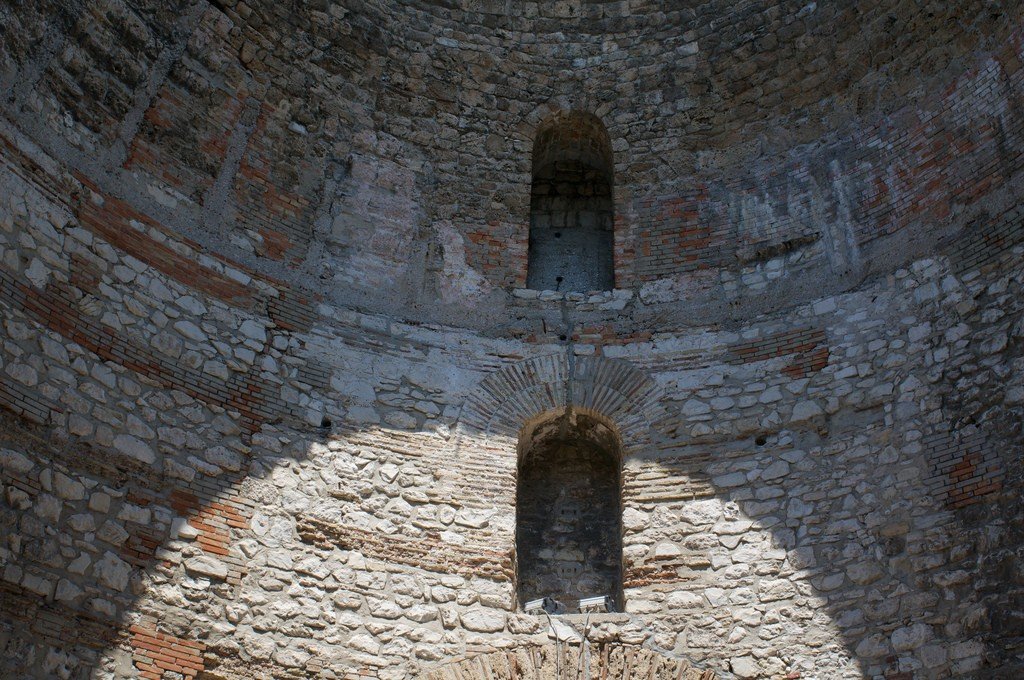
General information
Emperor Diocletian. Emperor divided the Roman Empire in 293 AD, leaving Asia Minor and the Balkans in his control. Diocletian came from the city of Salona (modern-day Solin near Split) and gradually moved the capital of his dominions to Split. The magnificent palace, which covered an area of more than 3 hectares, was completed in 305, towards the end of Diocletian’s reign. The emperor spent the rest of his life gardening in the palace.
.Architecture. The luxurious, striking palace was erected on the very seashore, its southern gate and colonnade facing the ship’s pier. The palace was surrounded by a 20-meter-high wall with 1 5 towers on the perimeter. The rectangular territory of the palace was crossed by two streets, there were temples of Jupiter and Venus, the imperial mausoleum, imperial chambers and ceremonial halls..The palace today
Over time, the population of Salona (present-day Solin) began to move into the palace, rebuilding and changing its appearance. Gradually, the city of Split grew in and around the palace. The premises were adapted for new purposes, the imperial mausoleum was turned into a Catholic church, and the famous cellars became commercial warehouses. The palace was saved from extinction by the Scottish historian and explorer Robert Adam, who published a description of the palace in 1764. Nowadays the preserved parts of the palace are restored and carefully protected, and the palace itself is not only a historical monument, but also a participant of modern life of the city: on the territory of the palace there are restaurants, souvenir stores and even hotels.
.Most interesting
- The Golden Gate (Zlatna Vrata), through which Emperor Diocletian entered the city .
- The Silver Gate (Srebrena Vrata), which led to the central square, the gathering place of the inhabitants .
- The Iron Gate (Zeljezna vrata), the best preserved, witnesses to all 17 centuries of the palace’s life. Once there was a statue of Nika, the goddess of victory, which was later replaced by a cross .
- The South Gate (Mjedena Vrata), once washed by the sea and overlooking the ship’s quay itself, now leads to the famous Split Riva (city promenade) .
- Vestibul, the semicircular tower that served as the entrance to the imperial chambers, still impresses with the grandeur of the architecture
- The Temple of Jupiter, which Scottish historian Robert Adam considered one of the most beautiful European architectural monuments
- Dungeons of Diocletian’s Palace
- Sv. Duje Cathedral, rebuilt from an imperial mausoleum
Information
- Website: www.visitsplit.com
- Cost: Visits to the palace grounds are free, entrance to the palace dungeon: 25 kuna .
- Opening hours: 08.00-00.00 .
- Entrance to Sv. Duje Cathedral: 15 kuna
Various exhibitions and concerts may be held on the grounds and in the underground rooms of the palace, for which entrance fees may apply. The schedule of events can be found on the website
.